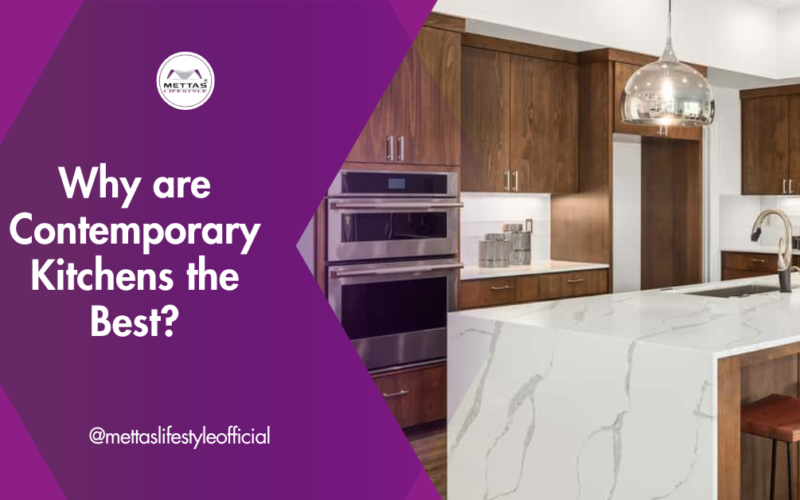

Table of Contents
ToggleIntroduction: The Best Height for a Kitchen Countertop
Kitchen countertops, the unsung heroes of culinary spaces, hold more than just pots and pans—they hold the potential for a well-designed and ergonomic kitchen. As we embark on this expansive exploration, we’ll unravel the intricacies of countertop height, considering various factors that extend beyond the standard measurements. Let’s delve into the art and science of creating a kitchen workspace that not only meets the eye but also caters to the comfort and efficiency of its users with Mettas Lifestyle.
The Foundation of Ergonomics

Ergonomics, the science of designing environments to fit the people who use them, is the cornerstone of an ideal kitchen. Achieving the perfect countertop height involves a meticulous understanding of how the human body moves and functions in a culinary setting.
Decoding the Standard

The standard height for kitchen countertops typically spans a range of 34 to 36 inches. This range is meticulously calculated to cater to the comfort and needs of the average adult. However, as we navigate the diverse landscape of user preferences and requirements, it becomes evident that a one-size-fits-all approach may not suffice.
Tailoring Countertop Height

1. User-Centric Adjustments
User height, a variable that significantly influences countertop comfort, is a focal point in customization. Taller individuals may find solace in a slightly elevated countertop to minimize bending, while their shorter counterparts might revel in the ease of a lowered surface.
2. Task-Specific Considerations
Tasks dictate the rhythm of the kitchen, and each task may demand a unique countertop height. For instance, a lower countertop, around 30 inches, could be a boon in a dedicated baking area, providing enhanced leverage for dough manipulation and reducing strain.
3. Embracing Appliance Harmony
The integration of kitchen appliances into the countertop landscape introduces a harmonious yet intricate dance. The dimensions and usage patterns of appliances, such as mixers and blenders, become instrumental in determining the optimal countertop height.
4. Universal Accessibility
In the spirit of inclusivity, kitchens must cater to individuals with varying abilities. Countertop height adjustments may be paramount to ensure that every member of the household can seamlessly navigate and engage in culinary activities.
Crafting Heights for Task Excellence

1. Prep Area: Maintaining a standard height of 36 inches for the primary food preparation zone ensures a versatile and comfortable workspace accommodating various tasks.
2. Baking Bliss: A lower countertop, hovering around 30 inches, transforms a designated baking area into a haven for kneading and shaping dough, where the tactile joy of baking meets ergonomic brilliance.
3. Elevated Elegance for Bar Seating: Elevate the countertop to 42 inches to seamlessly integrate a bar or seating area, offering an elegant transition from the kitchen to a social space. This height caters to the comfort of bar stools and fosters a cohesive design.
The Tapestry of Conclusion

In weaving together the threads of our exploration, it becomes evident that the best height for a kitchen countertop transcends the confines of standard measurements. It’s a symphony of user preferences, task-specific considerations, and a commitment to inclusivity. While the 34 to 36-inch range serves as a reliable foundation, customization based on individual needs and creative adaptations can elevate the kitchen experience to unparalleled heights.
Exploring the Vast Landscape of Countertop Heights

As we navigate the expansive realm of countertop heights, it’s essential to recognize that the kitchen is a dynamic space. Preferences evolve, family dynamics shift, and technological advancements usher in new possibilities. The tapestry of countertop heights is a canvas waiting to be adorned with unique strokes of individuality and functionality.
1. Adapting to Changing Needs
A kitchen is not a static entity but a living, breathing space that evolves with the needs of its users. Countertop heights, therefore, should be adaptable to changing family structures, culinary trends, and technological innovations.
2. Technological Integration
The modern kitchen is often a hub of technological marvels, from smart appliances to integrated systems. Countertops must seamlessly accommodate these advancements, ensuring that the user can effortlessly engage with technology while maintaining an efficient workspace.
3. Culinary Trends and Innovations
The culinary world is a dynamic landscape, with trends and innovations shaping the way we approach cooking. Countertop heights should be versatile enough to accommodate various cooking styles, from the meticulous artistry of baking to the swift precision of chopping and sautéing.
Unveiling Countertop Heights: A Culinary Odyssey

Embarking on a culinary odyssey within your kitchen involves more than just preparing meals; it’s about creating an experience. The countertop, as the stage for this culinary performance, should be meticulously designed to enhance every aspect of the cooking journey.
1. Visual Aesthetics
Beyond functionality, the visual aesthetics of countertop heights contribute to the overall ambiance of the kitchen. A well-designed countertop not only enhances the cooking experience but also adds a touch of elegance to the culinary space.
2. Customization as an Art Form
Countertop heights, much like an artist’s palette, should be open to customization. Tailoring the kitchen to your unique needs and preferences transforms it into a personalized oasis where every inch is a reflection of your culinary identity.
3. Spatial Harmony
Consider the spatial dynamics of your kitchen when determining countertop heights. An open and airy kitchen may benefit from higher countertops to maintain a sense of grandeur, while a cozier space may find comfort in lower surfaces that foster intimacy.
Beyond Practicality: Elevating Kitchen Couture

Elevating the kitchen experience involves transcending mere practicality and embracing the artistic nuances of design. Countertop heights, in this context, become a form of kitchen couture—a statement that blends functionality with the allure of style.
1. Materials and Textures
Exploring a myriad of materials and textures for your countertops adds layers to the visual and tactile experience. From sleek granite surfaces to warm wooden textures, the choice of materials contributes to the overall ambiance of the kitchen.
2. Incorporating Artistic Elements
Consider incorporating artistic elements into your countertop design. From mosaic patterns to custom engravings, infusing artistic touches transforms the countertop into a canvas for creative expression.
3. Symphony of Lighting
The interplay of light on countertops is a subtle yet powerful design element. Experiment with different lighting solutions to highlight the beauty of the countertop surface, creating a symphony of illumination that enhances the overall kitchen atmosphere.
Countertop Heights: A Culinary Saga Unveiled

As we unravel the saga of countertop heights, it becomes clear that this seemingly utilitarian element holds the power to shape the narrative of the entire kitchen. From ergonomic considerations to technological integration, culinary trends, and the aesthetics of design, countertop heights emerge as protagonists in the culinary saga.
Conclusion
In the grand tapestry of kitchen design, the exploration of countertop heights unveils a narrative that goes beyond mere functionality. It is a journey through the ergonomic considerations, technological integrations, and artistic expressions that shape the heart of the culinary space. As the threads of user preferences, adaptability, and visual aesthetics intertwine, the countertop becomes more than a surface—it becomes a canvas for culinary creativity and a reflection of individual identity.
Countertop heights, once confined to standard measurements, now transcend the boundaries of tradition. They adapt to the evolving needs of families, seamlessly integrate with smart technologies, and become a focal point for artistic expression. The kitchen, with its countertops as the protagonist, transforms into a dynamic space where every inch is carefully considered and tailored to enhance the overall cooking experience.
So, as you navigate your kitchen, let the quest for the perfect countertop height be an exploration—a culinary odyssey that goes beyond practicality and dives into the realms of personalization and style. May your kitchen be a haven where ergonomic brilliance meets artistic flair, creating a space that not only serves its purpose but also elevates the act of cooking into a delightful and inspiring experience?
In conclusion, the saga of countertop heights is a saga of culinary innovation and design evolution—a tale that continues to unfold with each slice, dice, and creation within the heart of your home.
Have questions about your next renovation project? We’ve got answers. Let’s do this together.
Follow House Beautiful on Instagram.
FAQs
Indeed, countertop heights should be adaptable to changing family structures, culinary trends, and technological innovations.
The modern kitchen often integrates smart appliances and systems, and countertop heights should facilitate seamless engagement with these technological advancements.
Yes, countertop heights should be versatile enough to accommodate various cooking styles, from baking to chopping and sautéing.
Visual aesthetics are crucial, contributing to the overall ambiance of the kitchen. Well-designed countertops add elegance and style to the culinary space.
Countertop design can transcend practicality by exploring materials, textures, artistic elements, and lighting to create a personalized and visually stunning kitchen.





1 comment. Leave new
[…] Have questions about your next renovation project? We’ve got answers. Let’s do this together. […]